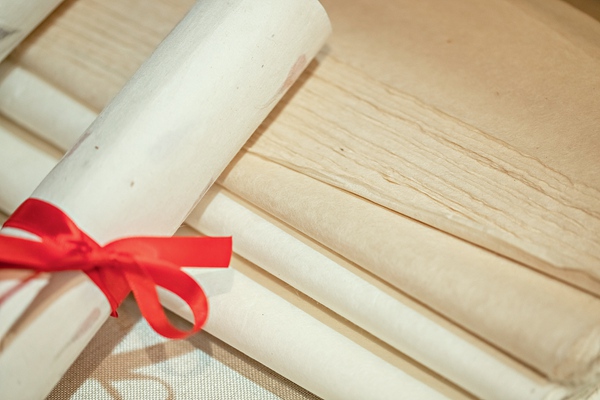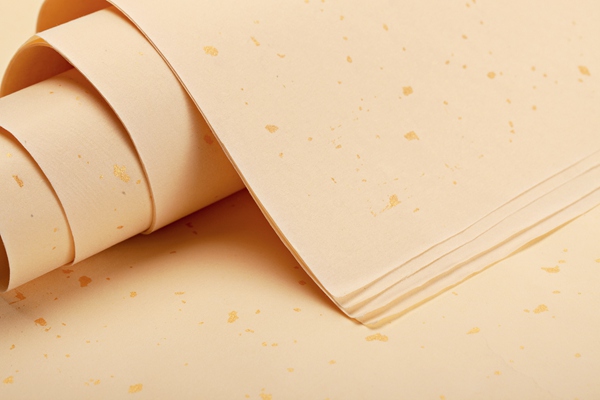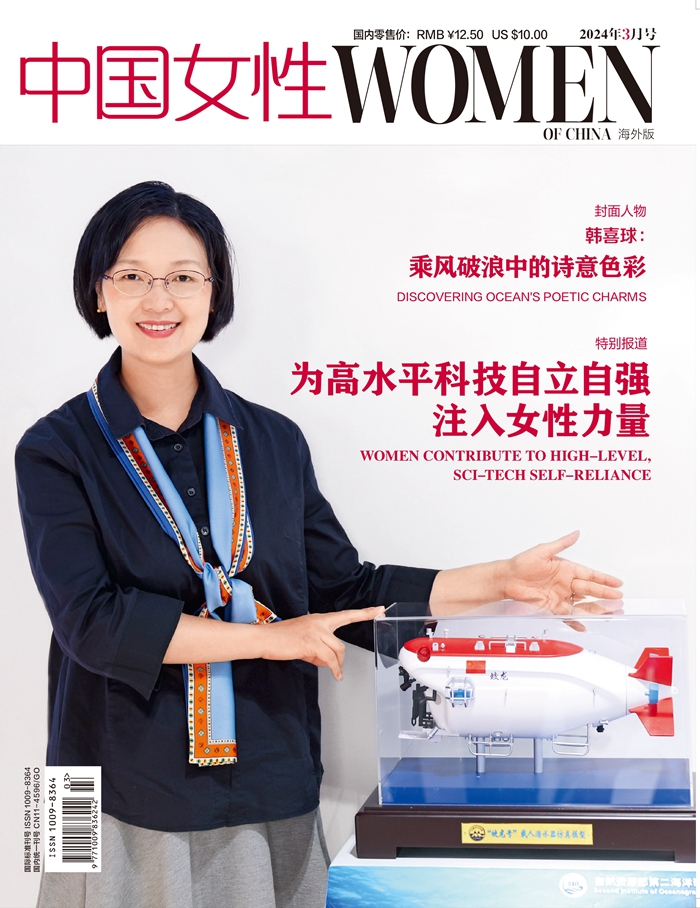Silk Road or Paper Road?

The Silk Road opened a new chapter in the integration of and cultural exchanges between East and West. As one of China's advanced technologies spread to the various countries and regions along the Silk Road (about a millennium ago), the papermaking craft exerted a far-reaching impact on civilizations throughout the world.
Papermaking is one of ancient China's four great inventions. The other three are gunpowder, printing and the compass. The invention of papermaking greatly promoted the development of human civilization.
Cai Lun, a eunuch and politician during the Eastern Han Dynasty (25-220 AD), is traditionally regarded as the inventor of paper, in the forms recognizable in modern times as paper (as opposed to papyrus). Although early forms of paper had existed in China, Cai was responsible for the first significant improvement and standardization of papermaking, by adding new materials into the composition of the paper. He invented paper by using mulberry and other bast fibers, along with fishnets, old rags and hemp waste.
After the Eastern Jin Dynasty (317-420 AD), paper was extensively used instead of traditional writing materials, such as silk and bamboo slips.


Paper and the Silk Road
In 1877, German geographer Ferdinand von Richthofen (1833-1905) coined the term "Silk Road" to refer to the network of land routes, which linked China and Europe from the 2nd century BC to the 15th century. Gemstones, silk and porcelain were most prominent among the various goods transported along the road from the East to the West. Perhaps the most important product carried along the trade network was paper, a now-ubiquitous material, which has promoted the development of human civilization. Exchanges of commodities among businesspeople from the Asian and European civilizations led to an intermingling of cultures, ideas and religions, as well as expertise in economics, politics, military science and science and technology.
Records indicate China's papermaking craft spread to several East and Southeast Asian countries, including Vietnam, Korea and Japan, between the third and sixth centuries. Based on China's papermaking craft, the countries developed various techniques to create paper.
The Arabs learned the papermaking craft from their Chinese prisoners, after the Arabs defeated the Chinese Tang army in the battle of Talas in 751. Then, Arabia became a papermaking center, from which the craft (of creating paper) spread throughout the Middle East and to North Africa and Europe.


Protecting, Inheriting Intangible Cultural Heritage
Many regions in China are renowned for their excellent handmade paper, which is of high artistic and practical value. Many regions' papermaking crafts are on China's list of items of intangible cultural heritage.
During the past millennia, numerous craftspeople, in various regions of the country, have devoted their lives to studying and saving papermaking crafts. They have also spared no effort in improving their papermaking skills.
Beizhang, a village in Xi'an (capital of Northwest China's Shaanxi Province), has an abundance of paper mulberry. Since ancient times, the villagers have used trees' bark to create paper. The residents' papermaking craft is commonly referred to as the "living fossil of the evolution of handmade paper."
For millennia, Jingxian (a county in East China's Anhui Province) has been known for its smooth, handmade rice paper, also known as Xuan Paper. The paper, which will not fade easily, is an ideal option for creating calligraphies and paintings. Making the paper involves more than 140 complicated procedures.
In 2006, the craft of making Xuan Paper was listed among the first group of elements designated as national intangible cultural heritage. The art form was added to the list of UNESCO (United Nations Educational, Scientific and Cultural Organization)'s intangible cultural heritage in 2009.
Cao Guanghua, a State-level inheritor of the craft of making Xuan Paper, has made great contributions to the promotion of the traditional craft. He is one of Anhui's provincial masters of arts and crafts, and he is Vice-President of the China Association of Four Treasures of the Study (including writing brushes, inksticks, paper and inkstones). During the past five decades, he has exerted every effort to study the traditional craft, and to improve his craft-making skills.
In September 1954, Cao was born in Xiaoling, a village in Jingxian. He began learning, from his parents, how to make paper at an early age. In 1970, he began working at a paper mill. In 1992, he was elected director of Jingxian Xiaoling Xuan Paper Mill.
During the past three decades, Cao has scored remarkable achievements in innovating the technical skills used to create paper, and he has won many prizes during national and international exhibitions. In April 2006, the Trademark Office, under China's State Administration for Industry and Commerce, approved Cao's application to register a brand name — Cao Guanghua — for the paper produced by his plant. He became the first Xuan Paper producer in China to have his product registered after his name.
To protect the cultural heritage, Cao during the past two decades has taught more than 20 apprentices the paper-making skills. He plans to create an "encyclopedia" about Xuan Paper, in which he will record his experiences in studying and producing the paper.

Mangtuan, a village in Mengding, a town in Gengma Dai and Va Autonomous County (in Lincang, a city in Southwest China's Yunnan Province), is renowned for its thick, strong handmade paper. Despite the rapid scientific and technological development in the country during the past few decades, Mangtuan's Dai and Naxi residents have continued to use traditional methods to make paper. The residents' papermaking craft, commonly referred to as the "living fossil of the historical development and cultural heritage of China's papermaking," is noted for having the most complete procedures for creating handmade paper. In 2006, China added the craft to the list of the country's items of intangible cultural heritage.
For about 600 years, Mangtuan's craft of creating handmade paper has been handed down from generation to generation, especially among women. Virtually every villager has learned how to make paper.
Many families (in Mangtuan) have turned their houses into processing plants, in which the family members make paper. To make the item, they must complete complicated procedures — including soaking mulberry bark in water, stewing and cleaning the bark, hammering the bark with a wooden mallet until it becomes mush, scattering pulp in a mold, drying the mold in the sun and using a wooden knife to tear paper from the mold — by hand.
Ai Ye, an ethnic Dai resident of Mangtuan, innovated the traditional papermaking craft by adding flowers and leaves to the pulp used to make the paper. In 2014, she established Mangtuan Daiying Crafts Co., Ltd., to create and sell "floral paper." Given the sound development of the company's business, jobs have been created for more than 120 women in Mengding.
The booming business of Ai's studio has not only contributed greatly to Mengding's economic development, but it has also helped to promote the local tourism industry.
Many visitors (to the studio) have said they will keep their "precious experiences" of making "floral paper," with the help of Ai and her employees, in the "treasure house" of their memories. The visitors have also said the fragrant paper, which reminds them of their pleasant trips to Mangtuan, embodies the mysterious beauty of nature and the enduring charm of the traditional craft.

Photos Supplied by VCG
(Women of China English Monthly December 2021 issue)
Please understand that womenofchina.cn,a non-profit, information-communication website, cannot reach every writer before using articles and images. For copyright issues, please contact us by emailing: website@womenofchina.cn. The articles published and opinions expressed on this website represent the opinions of writers and are not necessarily shared by womenofchina.cn.








 WeChat
WeChat Weibo
Weibo 京公网安备 11010102004314号
京公网安备 11010102004314号